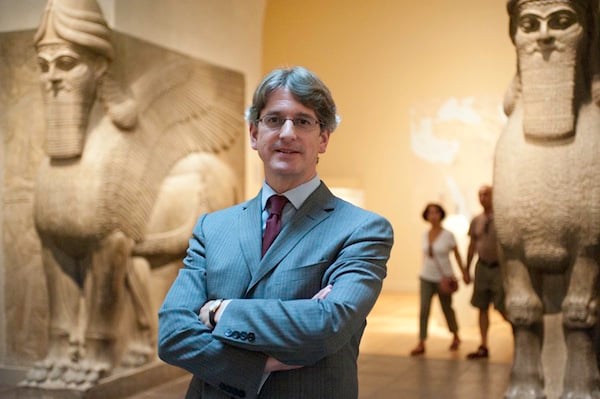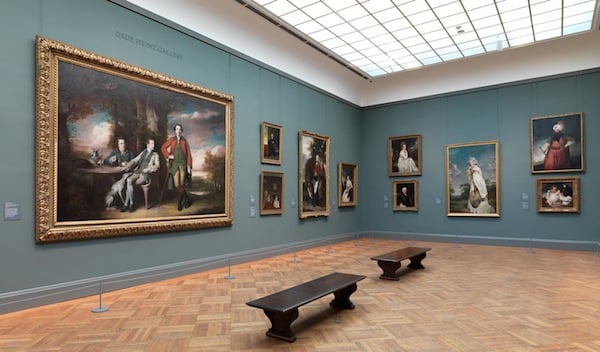Art World
Kings of Compensation: How the Metropolitan Museum of Art Rewards its Own
The Met's top brass are raking it in.

The Met's top brass are raking it in.

by
Philip Boroff

Thomas Campbell, who was paid relatively modestly when he took over the Metropolitan Museum of Art in 2009, has advanced toward the top of the pack.
The Met gave the former tapestry curator a 10 percent raise in 2012, to $1.2 million in salary and benefits, according to its tax return. His compensation bested James Cuno, president and chief executive officer of Los Angeles’ J. Paul Getty Trust, and Ellen Futter, president of the American Museum of Natural History, both of whom made about $1.1 million, according to their institutions’ most recent disclosures.
Leading the Met, with expenses last season of $344 million, involves intense fundraising, integrating the Whitney Museum space on Madison Avenue, managing 17 curatorial departments, and current and former trustees. “You have to manage down and up equally well,’’ said Sarah James of nonprofit recruiter Phillips Oppenheim.
Campbell’s compensation increase came as the Met’s attendance dipped slightly and the institution reported its first operating loss since 2008-2009. But net assets grew about 11 percent, to $3 billion.
In 2008, when Campbell was a curator for nine months and director-elect for three, he made $246,000. He was bumped up to $1 million for his first full year running the most-visited museum in the US. He’s still behind Glenn Lowry at the Museum of Modern Art, the perennial compensation king, who earned $1.8 million in 2011.
Lowry likely earned even more in 2012. (MoMA’s new tax return is expected in May.) MoMA is a private museum while the Met is one of 33 New York institutions that operate rent-free on city-owned property and receive ongoing municipal support. The packages for Lowry, Campbell, and Met president Emily Rafferty include a housing allowance or rent-free apartment. All entertain for work.
James Abruzzo, a nonprofit recruiter and compensation consultant, said pay has escalated at big cultural organizations partly because of a shortage of qualified, available people to run them. “If demand is high and supply is low, prices go up,’’ he said.
Abruzzo attributed the dearth of experienced leaders in part to a lack of succession planning at organizations. And as trustees make more in their day jobs as chief executives and investment titans, they’re more comfortable approving raises for museum directors. “It’s a really tough job,’’ said Abruzzo, a managing director with recruiter DHR International. “Those who do it well deserve every penny.’’
Harold Holzer, a Met spokesman, said trustees gave raises to Campbell and Rafferty, who earned $885,000 in 2012, because of performance. “They’re expressing their confidence and appreciation,’’ Holzer said in a telephone interview. Holzer, the senior vice president for public affairs, got a 3 percent raise to $476,000, including benefits, in 2012.
Met board chairman Daniel Brodsky, a real estate developer, also leads the museum’s compensation committee. According to the Met’s tax return, an independent consultant annually looks at comparable executives and organizations in making recommendations. Pay is also based on “the market for executive talent,” according to the return.

One of the Metropolitan Museum’s newly reinstalled and renovated European Paintings galleries.
Courtesy the Metropolitan Museum of Art.
The fiscal year’s high points included Leonard Lauder’s promised gift of 78 Cubist pictures and the reopening and redesign of 45 Old Master galleries, Campbell and Rafferty wrote in the annual report. There were also infrastructure investments, a new members lounge and digitizing hundreds of Met publications, many out of print, and making them accessible online for free.
Campbell’s compensation increase came as Met attendance dropped slightly (as at MoMA)—to 6.2 million from a record 6.28 million in 2011-12. Comparisons with the previous season are “difficult’’ given the absence of a blockbuster exhibition rivaling the fashion of Alexander McQueen, which was on display in early 2011, the Met said. Decreased attendence was also blamed on the aftereffects of Hurricane Sandy. Construction of the David H. Koch Plaza, with new fountains and an illuminated façade, may not have helped. “We’ve worked hard to create and maintain inventive, attractive and informative signage but the fact is that a great deal of plaza space is under wraps and we all look forward to the September unveiling,’’ Holzer said.
The museum had an operating deficit of $4.4 million, its first operating loss since 2008-09. Then, the financial crisis decimated its investments by a quarter and the Met fired or bought out 14 percent of staff. Last season, thanks to fundraising and rising markets, net assets jumped by $290 million to $3 billion. (Net assets exclude art.) Suzanne Brenner, the chief investment officer, earned $1.2 million, including a $401,000 bonus and $206,000 in deferred pay from a previous year.
Barbara Dougherty, who worked at the museum for 41 years and retired in February 2012 as chief membership officer, received $1.2 million. That included $1 million in “separation pay,’’ which Holzer said was the cash value of her accumulated pension. Membership has more than doubled since Dougherty became associate manager of the department, in 1979, and dues last season totaled $29 million. Erin Coburn, the chief officer of digital media, also received separation pay—$183,000. She left at the end of 2012 after two and a half years. Sree Sreenivasan was named the Met’s first chief digital officer, a more senior position, at a yet-undisclosed salary, in June 2013.
On October 30 the Met won a victory in New York State Supreme court, when a judge dismissed claims in two lawsuits that the museum’s “recommended’’ admission charges are deceptive—legally, admission is pay-what-you-wish—and violates its lease with the city. Arnold Weiss, a lawyer for the plaintiffs, said they’ve appealed. Admissions accounted for $38 million last season, 15 percent of operating revenue. The Met said in its annual report that an adverse outcome in either suit “could be material to the museum.’’